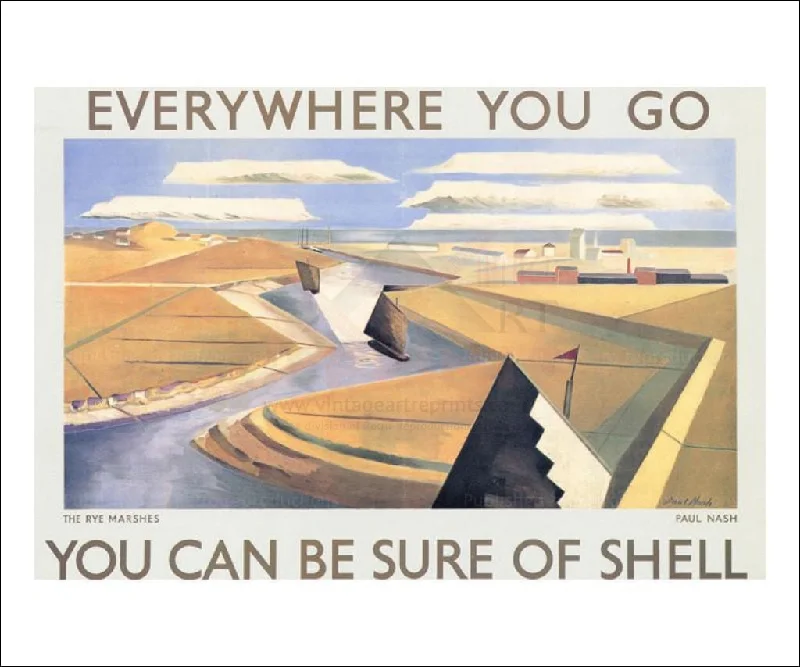Born in London, Nash grew up in where he developed a love of the landscape. He entered the but was poor at figure drawing and concentrated on landscape painting. Nash found much inspiration in landscapes with elements of ancient history, such as burial mounds, such as and the standing sones at in Wiltshire. The artworks he produced during are among the most iconic images of the conflict. After the war Nash continued to focus on landscape painting, originally in a formalized, decorative style but, throughout the 1930s, in an increasingly abstract and surreal manner. In his paintings he often placed everyday objects into a landscape to give them a new identity and symbolism.
Rapid siltation created the Romney marshes that today separate Rye from the incoming tides. Longshore drift moved shingle along the coast and deposited the load in a strip out from the headland. The strip ran parallel to the coast and began to block off the Romney Bay, leaving an area of calm water and encouraging more deposition.

